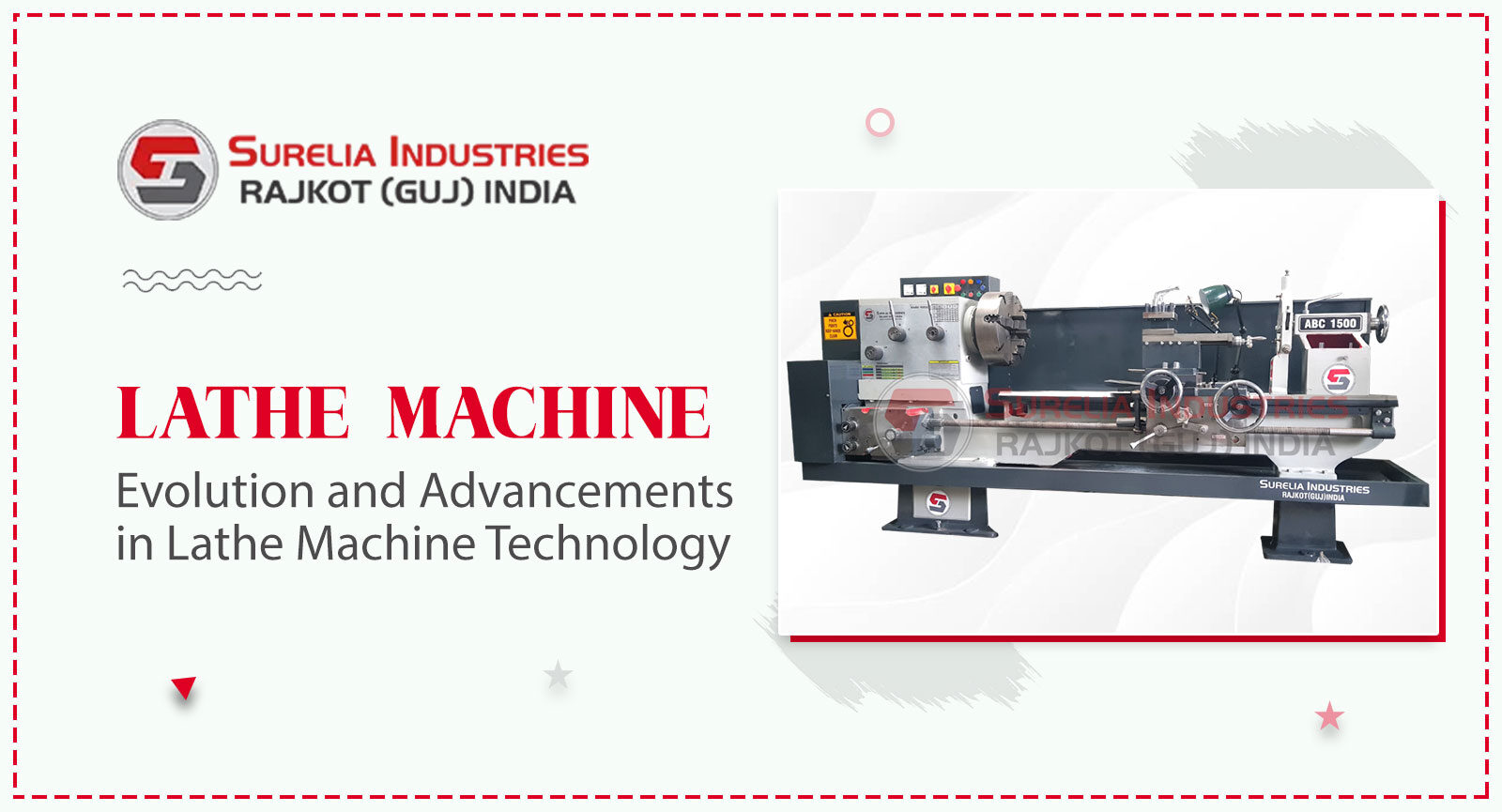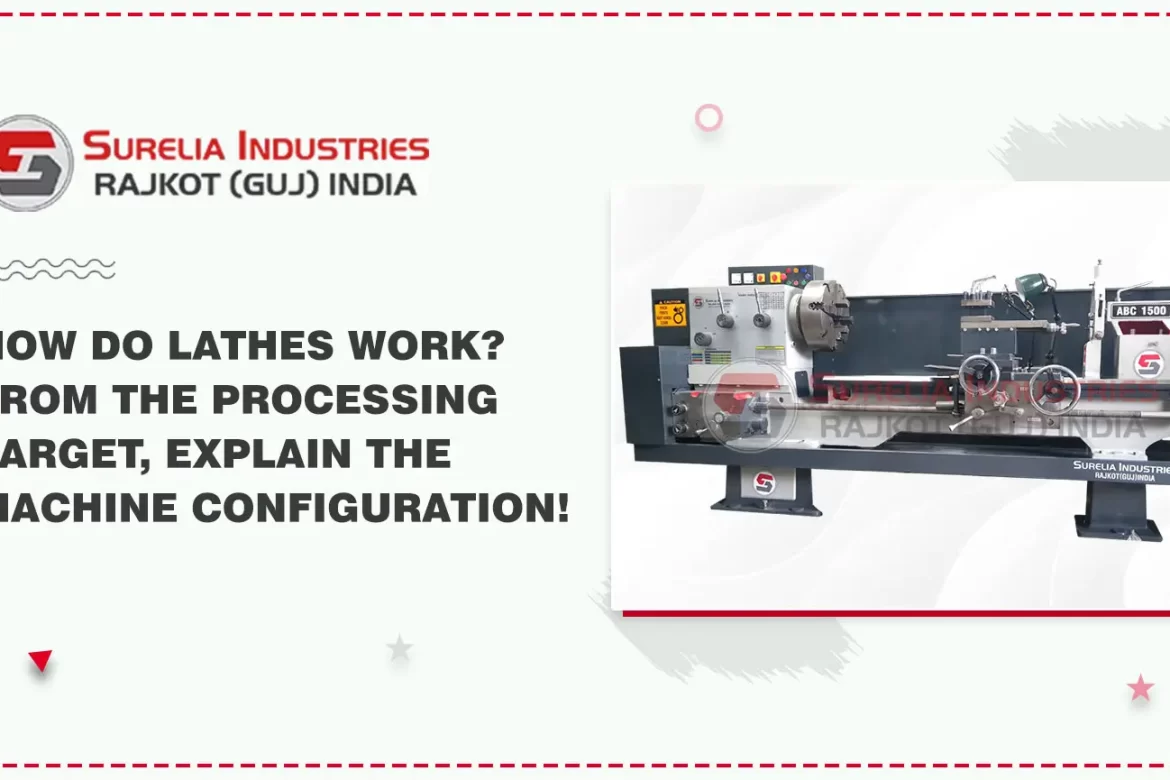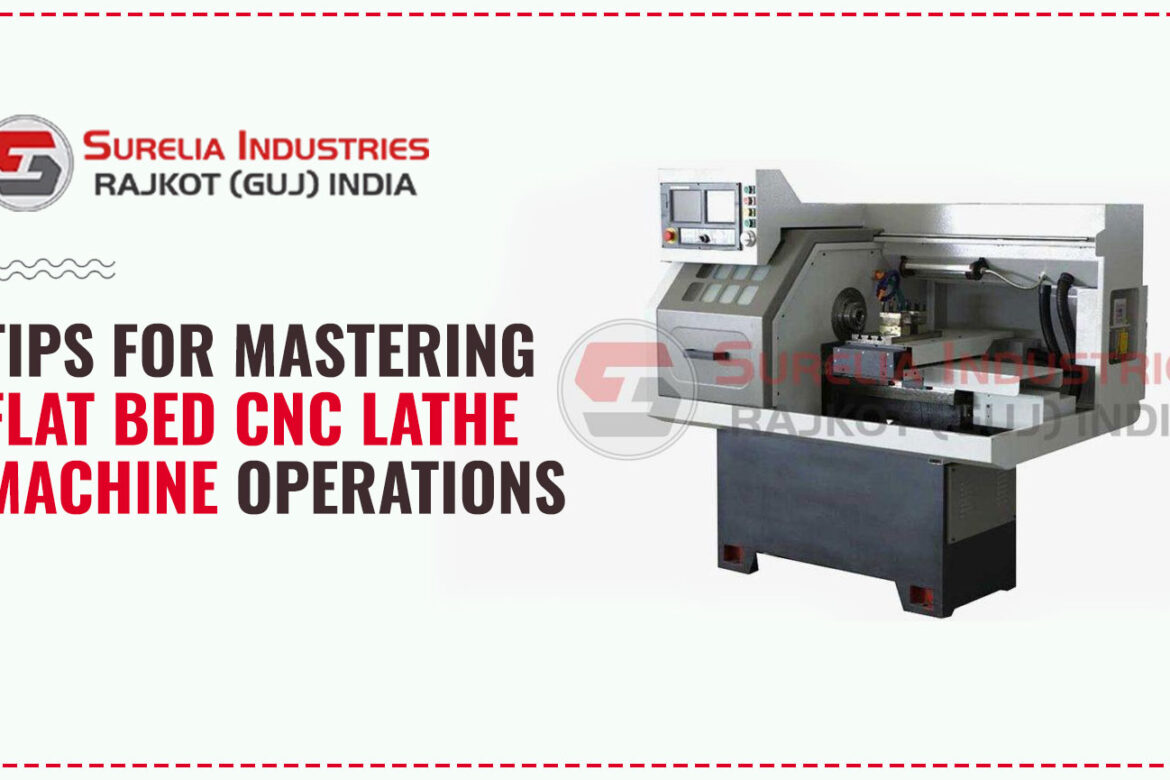Precision and efficiency are of the utmost importance in the industrial industry, and few devices better exemplify these concepts than lathe machine. The development of these machines from their early days as hand tools to the high-tech, computer-controlled systems of today are really astonishing. With their ability to shape and transform raw materials with unparalleled accuracy, lathe types of equipment have played a pivotal role in advancing manufacturing capabilities, driving innovation, and delivering products of exceptional quality. In this dynamic landscape, machines stand as a testament to human ingenuity and the relentless pursuit of precision engineering.
The Development of Lathe Machine
Ancient civilizations’ master craftspeople employed basic tools, including lathes, to shape and turn materials. In order to make exact cuts and curves, early lathes had to be handled manually, putting a premium on the skills of the artisan.
The fundamental concepts of rotating and shaping used by modern lathe machine may be traced back to these early technologies.
The Rise of Lathe Machine and the Age of Industry
The development of modern machines coincided with the advent of the industrial age. Power lathes progressively supplanted manual ones with the invention of steam power and the subsequent growth of automation.
Known as engine lathes, these early powered lathes allowed for greater accuracy and productivity. Standardized components and interchangeable assemblies have helped simplify production even further.
CNC Lathe Machine Become Commonplace
Computer Numerical Control (CNC) was the technological game-changer for these machines. With the help of computers and automation, lathe work has become more precise and adaptable than ever before. By eliminating the need for human intervention and allowing for the programming of more complicated forms,
CNC lathe machine widened the scope of what was possible. This change was a watershed moment in machine development, making it possible to mass-produce complex parts and sparking new ideas across sectors.
Technologies that Improve CNC Lathe Machine
CNC lathe machine has advanced through time, becoming equipped with state-of-the-art features that have greatly expanded their range of possible uses in the industrial sector.
Exact Engineering
CNC machines’ highly exact motions are made possible by servo motors and sophisticated control systems. Industries that need very precise work include those involved in aircraft and medical device production.
Multi-axis machining
Multi-axis machining is possible because most contemporary CNC lathes have more than one axis of motion. As a result, manufacturing times are shortened and the need for human involvement is lessened.
Live Tooling and Milling Capabilities
In addition to conventional turning, many modern CNC machines also have live tooling attachments that allow for milling, drilling, and tapping. Because of this consolidation of tasks, no longer will individual computers’ components need to be moved around.
User-friendly screens
Because difficult command-line programming has been replaced with user-friendly touchscreen interfaces, CNC machines can now be operated by a wider range of workers.
Real-time monitoring and data collecting
Modern CNC lathe systems include this feature, which helps operators keep tabs on production, spot any discrepancies, and fine-tune their methods for maximum output.
Intelligent Production and Business
Integrating data analytics, Internet of Things (IoT) connection, and cloud-based solutions, All Geared Lathe Machine is rapidly becoming an essential part of the intelligent manufacturing environment.
Potential Future
Several developments are influencing the direction of the future of lathe machine:
- One rising trend is the incorporation of additive manufacturing capabilities into lathe machine, which opens the door to the production of complex geometries and hybrid parts.
- Integration of artificial intelligence (AI) may boost productivity and decrease downtime by optimizing cutting settings, predicting tool wear, and recognizing trends.
- To achieve sustainable production objectives, the next generation of machines will likely have an emphasis on energy efficiency, decreased waste, and ecologically friendly procedures.
- As the need for individualized items grows, machines by Lathe Machine manufacturers in India will develop to meet the challenge of efficiently turning out one-of-a-kind parts.
Conclusion
The trend of industrial innovation is mirrored in the development of this machine technology, which has progressed from manual tools to sophisticated CNC systems. These machines are now indispensable in several fields, from the automobile industry to the aerospace sector, where they help produce crucial components for contemporary living. The development of ever more sophisticated and adaptable machines will undoubtedly change the face of the industry for decades to come.
Surelia Industries is a renowned Lathe machine supplier in India and has made great efforts in research and development.

Surelia Industries
Surelia Industries has immense expertise in the manufacturing of lathe machine. We have been providing top quality Lathe Machine to our clients since 1975.









